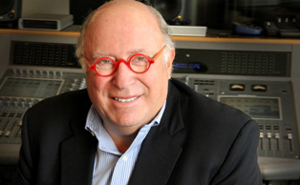Howard Schwartz Recording Closes: Pioneering Audio Post Firm Exits After 36 Years
Howard Schwartz Recording (hsr|ny), one of New York City’s largest and longest-running audio post facilities, has closed its doors. The 22,000-sq. ft. facility founded by Howie Schwartz in 1975 has lost its lease, and ceased operations on May 13th.
hsr|ny was the home to dozens of staffers, 12 mixing/ADR/recording studios, and the visual creative agency Motive. The cost of maintaining a multi-room complex in the heart of midtown, in the famed Graybar Building at 420 Lexington Avenue, was unquestionably a major reason for the demise of hsr|ny, but other factors that affect survival in the pressure-packed audio post industry were also in play.
“Howie Schwartz is a pioneer in this business, so I think it’s a blow to the industry for someone like that to close shop,” says Tom Jucarone, President and Partner of the downtown mixing facility Sound Lounge. “The audio post business has spread out a lot over many, many players, whereas there used to be much fewer places to do it.”
In Jucarone’s view, the closing of hsr|ny in no way serves as an indicator that the days of all large-scale NYC audio post houses – facilities such as audioEngine, Nutmeg Post, PostWorks, and Sound Lounge — are numbered. “I’m sure in his location, the overhead was expensive, but when you lose key people and they take business away with them, the overhead looms larger,” he notes. “Whether your facility is large or small, I think it all comes down the talent of your people. Howie lost quite a few people in the last couple of years, and that hurt him. As long as we can keep our people here, we can keep our business. That’s what it’s all about — not the size of the facility.”
The steady migration of audio post work to other avenues including smaller boutiques, video editing firms, and in-house at advertising agencies, also took a toll on hsr|ny, which recorded its first music and radio spots in the John Storyk-designed Studio A when Gerald Ford was in office and ABC, CBS and NBC ruled media.
“There’s downward pressure on pricing,” says Howard Bowler, President of Hobo Audio Company, a three-room facility in Manhattan’s Garment District. “We’re aware of it, we deal with it, and it’s a balancing act. I’m sure hsr|ny dealt with that. There’s still a lot of broadcast production, but there is less of it, and content creation is splintered among various formats, from portable devices to Internet use.
“Clients are also less inclined to put forth $1,000,000 for a spot. They’d prefer to test it for a while, and in the economy we’re in that’s understandable: You have to tread carefully and be confident that you’re putting your money in the right place.”
While Schwartz himself was a sometimes controversial figure in audio post, there’s no denying the scope of his accomplishment with hsr|ny. He steadily built his business from one room into a flagship for one of the world’s most fiercely competitive commercial production centers, serving as a training ground for scores of NYC’s top mixers, ADR specialists, and audio engineers.
“It’s like CBGB closing: an institution, a fantastic space with a deep history,” Bowler observes. “He put his heart and soul into the place, and it was very successful for many years. It’s an achievement I can only hope to come close to.”
Howie Schwartz and a skeleton staff are currently in the process of breaking down the facility, which will be completely vacated by mid-June. “After 36 years, I have no regrets,” he said.
— David Weiss
Please note: When you buy products through links on this page, we may earn an affiliate commission.








Thomas Maguire
May 26, 2011 at 12:08 pm (14 years ago)How many more irreplaceable rooms are we going to lose before our business maven mayor wakes up and realizes they are essential to the type of production New York is famous for. It’s almost as though he is working for LA! We need the same kind of real estate tax rebate program Mike gives to his developer friends to help line their pockets. Only this time, we need it to support an industry that actually generates ongoing jobs.
Tanya Teich
May 26, 2011 at 1:48 pm (14 years ago)ABSOLUTELY IN AGREEMENT TOM!
Doug Cook
September 6, 2011 at 2:33 pm (13 years ago)I was shocked when I heard the news about Howard’s closing. He was a valued business associate for many years and supporter of many AES events while I was chairman. Personally, I have moved on to another career but will always appreciate HRS’s contributions to NYC audio history. I wish all the best to the HSR staff and Howie.
Doug Cook
Warren Cosford
March 24, 2012 at 4:31 am (13 years ago)Howard once worked at CHUM AM/FM Toronto in 1971. I fired him. I said…Howard…you’re not a Radio Guy. You’re an Advertising Guy.
Howie….please don’t forget me when you write The Book.
Warren Cosford
Sugar/;D
October 9, 2013 at 2:37 am (11 years ago)Love being a part of That History….Thanks Boss…./;D